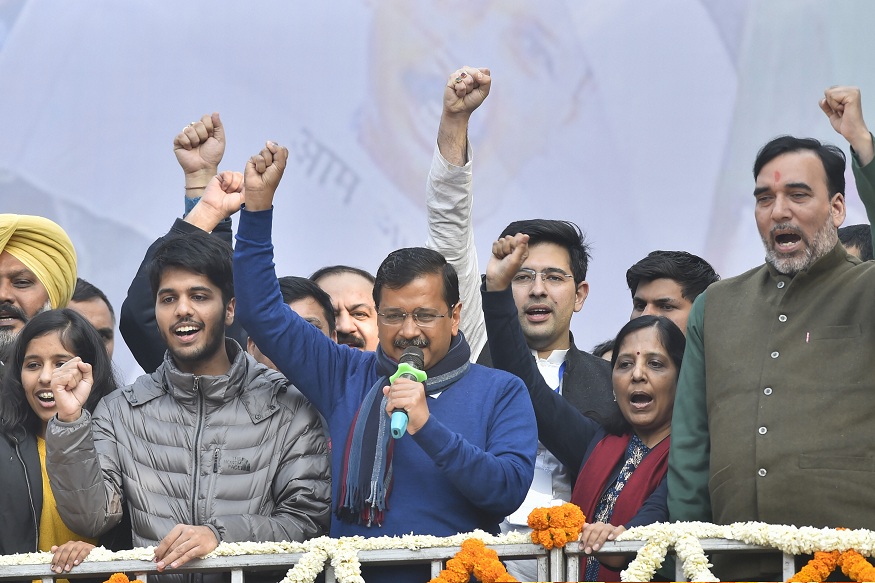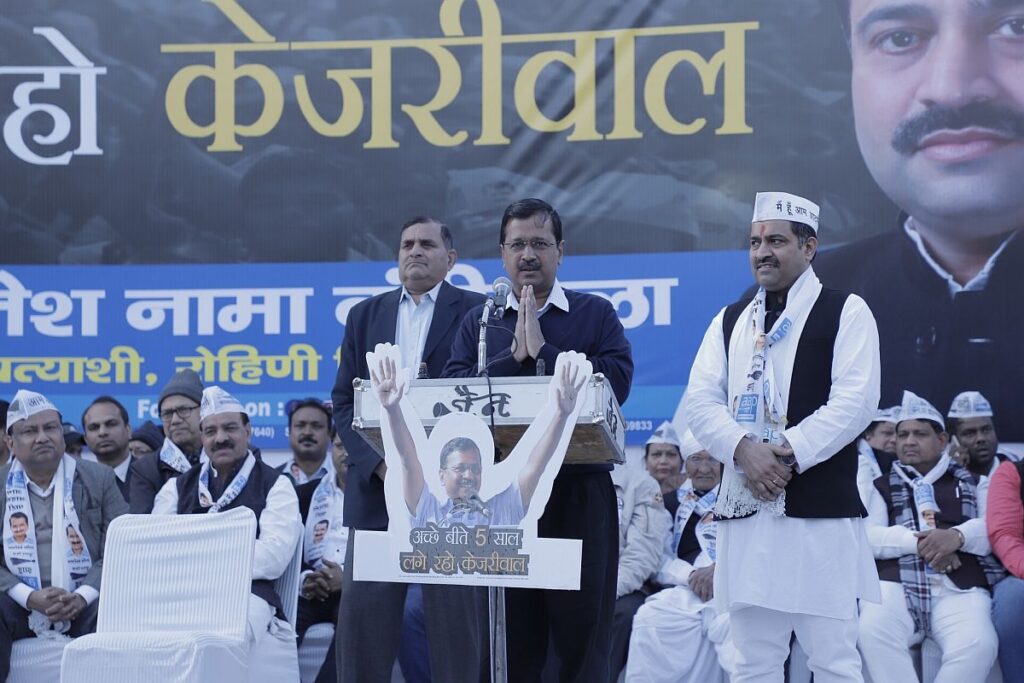By Professor Ujjwal K Chowdhury
 No second thought. Development agenda won against divisive agenda. The benefits of water, power, health, education, transport, doorstep services, local roads and bridges received by 2.5 crores people of Delhi (voter numbers lesser) won over the divisive agenda targeting Shaheen Bagh protesters and calling the sitting Chief Minister a terrorist or impure (ashuddh). While AAP had its state government’s work to showcase, BJP had nothing in spite of winning all 7 MP seats twice and being in power in all municipal corporations of Delhi thrice.
No second thought. Development agenda won against divisive agenda. The benefits of water, power, health, education, transport, doorstep services, local roads and bridges received by 2.5 crores people of Delhi (voter numbers lesser) won over the divisive agenda targeting Shaheen Bagh protesters and calling the sitting Chief Minister a terrorist or impure (ashuddh). While AAP had its state government’s work to showcase, BJP had nothing in spite of winning all 7 MP seats twice and being in power in all municipal corporations of Delhi thrice.
But that is not all.
The core BJP support base of a little above 38% votes is still intact and even increased from the usual 32-33%. It is the additional 15-16% it got in national elections due to the face and name of Narendra Modi as a single powerful leader while opposition cannot project anyone, which is gone, because this time BJP could not project any CM face as against the powerful CM face of Kejriwal. So around 16% votes gone.
Where does Congress go from here?
Congress is rudderless, without any face or strategy in Delhi. They were bound to be defeated squarely, but going to its lowest vote percentage is astonishing (around 5% its lowest historically). Since AAP has not increased its past vote percentage of last Vidhan Sabha which itself was and still is a little above 50%, BJP actually gained from shift of votes of Congress to its this time. The lessons for Congress: have a clear strategy, focus on defeating BJP more than putting up candidates to lose their security, be a junior partner of powerful regional parties in each state and weaken your main political rival. This lesson will be much needed in Bihar and Bengal next. This lesson has served them well in Maharashtra and Jharkhand, and was forgotten in Haryana polls.
BJP’s spin masters and their ‘friends in media’ have started now reducing the importance of Delhi elections “which is a semi-state, a glorified municipality”, and trying to keep the image of Amit Shah in tact, while it was Home Minister Shah who led a protracted door to door campaign in Delhi, and put together an apparently formidable army of 200 MPs, 11 CMs and around 60 central ministers to campaign in 70 assembly seats of Delhi, even having food and staying with the voters in the nights. But such last minute mega resourceful campaign can go that much when facing a formidable work on ground. And that is a crucial lesson. Hate has a limited life-cycle, visible and recognized good work on ground can go a long way.

Where does AAP go from here?
First, focus on the 10 Guarantees and other promises in the Manifesto from Day 1 and put up every measure, success and policy in public domain aggressively. Second, let Manish Sisodia be the de facto Chief Minister, focus on the new guarantees and promises, and the next municipal corporation elections of Delhi to necessarily win in them. There are some proven highly educated young leaders like Atishi and Raghav Chadha etc who have won this time from AAP and should shoulder bigger responsibilities.
Third, Kejriwal can focus on Punjab next with Bhagwant Mann as the CM face, and on those states where BJP and Congress are in direct contest without any major third party existing. They can spread from Gujarat to Rajasthan, MP, Chattisgarh, Uttaranchal, Himachal, etc. Also he can tie-up with Mamata Banerjee, Stalin, Hemant Soren to create a third front.
Fourth, AAP needs to document and create a Bottoms-Up Welfare-based Pro-People Development Model of Delhi as against the much-touted Top-Down Big Business centric Growth-model of Gujarat ruled by BJP. This can be the focus of their campaign nationally in selected cities, which can then draw up constituency-specific manifestos, development dialogues in these states, and new young aggressive youthful leadership to take up the cudgels. This is the only way for AAP to grow.
Where does BJP go from here?
Perhaps BJP must recognize now the limited life of hate-based Hindu-Muslim and anti-Pakistan rhetoric, which can go this much and not more. Pakistan-Balakot-Pulwama rhetoric clicked in 2019 general elections due to the hype around nationalism. But now the economy is pinching hard. From 8% to around 4% GDP growth, a 45-years worst joblessness figures, housing and realty sectors hit hard, glut in the market with dwindling consumer spending, all core sectors going down some in red: all these cannot go unnoticed due to high pitch Hindu-Muslim conflict engineered through new citizenship regime. It must deliver in the economy or perish.
Where does India go from here?
India has elected NDA government led by Modi till 2024. But the first one year itself has been too eventful with an erstwhile and special state under lockdown, and nation divided on citizenship issue. India needs a government that cares, and not scares; a government that is giving, rather than snatching under different pleas; and also a government that is focused on small, medium and cottage industries, public health and education, rather than large business, MNCs, monopolies. AAP victory makes this amply clear. India needs a better federalism than what is seen in acrimony between BJP and opposition in states like Delhi and Bengal.
Bihar and Bengal shall be the focus point of all parties now. BJP will do well to focus on track-record of work done in Bihar and an alternate vision of development in Bengal. Merely anti-Mamata rhetoric and hatred for Muslims will not help BJP in Bengal assembly polls. Opposition needs to unite its ranks and learn lessons from AAP Delhi government to focus only on development agenda. Mamata was the first to congratulate Kejriwal and note that a new phase of democratic politics has started now. Very telling comment indeed.
BJP can take refuse in the increased in seats but AAP’s 67-03 performance was never to be repeated under all normal situation. BJP last minute surge in public support could be a sideways consequence of heightened anti-Muslim anti-rhetoric which works well with some sections of the electorate. But this does not show any substantive change in the fortunes of BJP nor the dominant narrative of this election, and that is, development.
India may be positively looking at development centric elections ahead too and that is a good news. India, with 135 crores population, 4th largest economy, youngest population with more than 2 among 3 people below 35 years, needs a government that ensures good governance, a politics that talks of jobs, economy, education and health, a party system which is not based on communal identities. Long way to go, but the start is surely made.
The author is a columnist, television commentator, and the Pro Vice Chancellor or Kolkata based Adamas University.






















